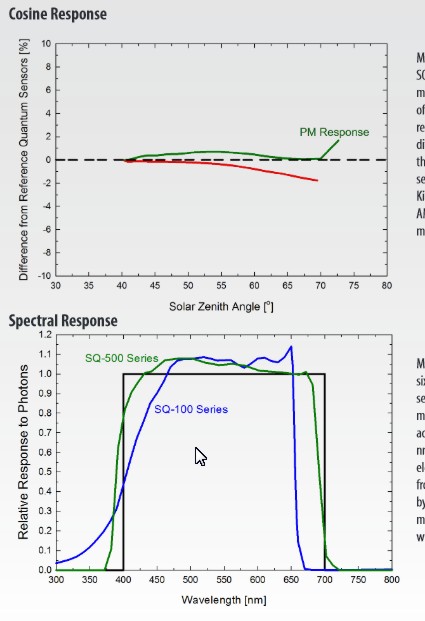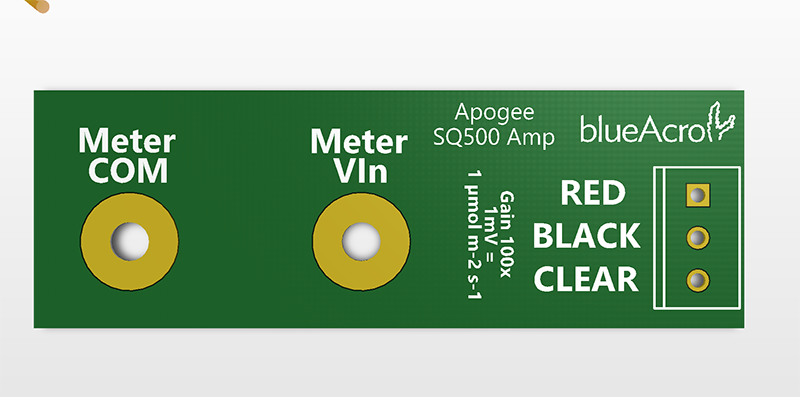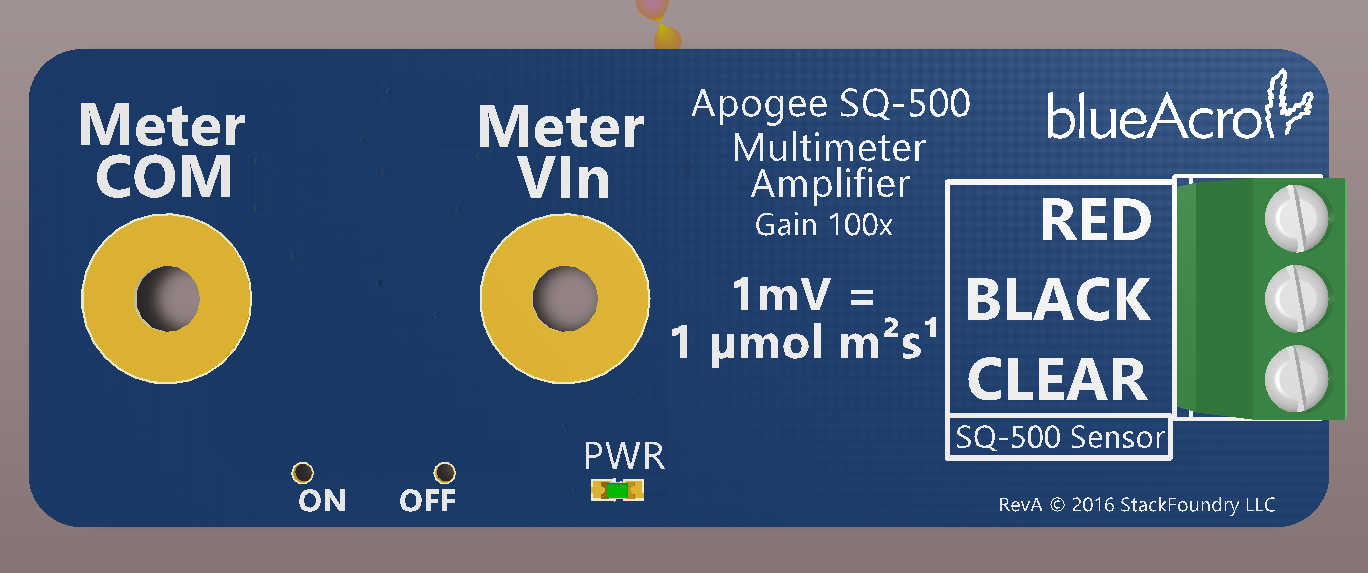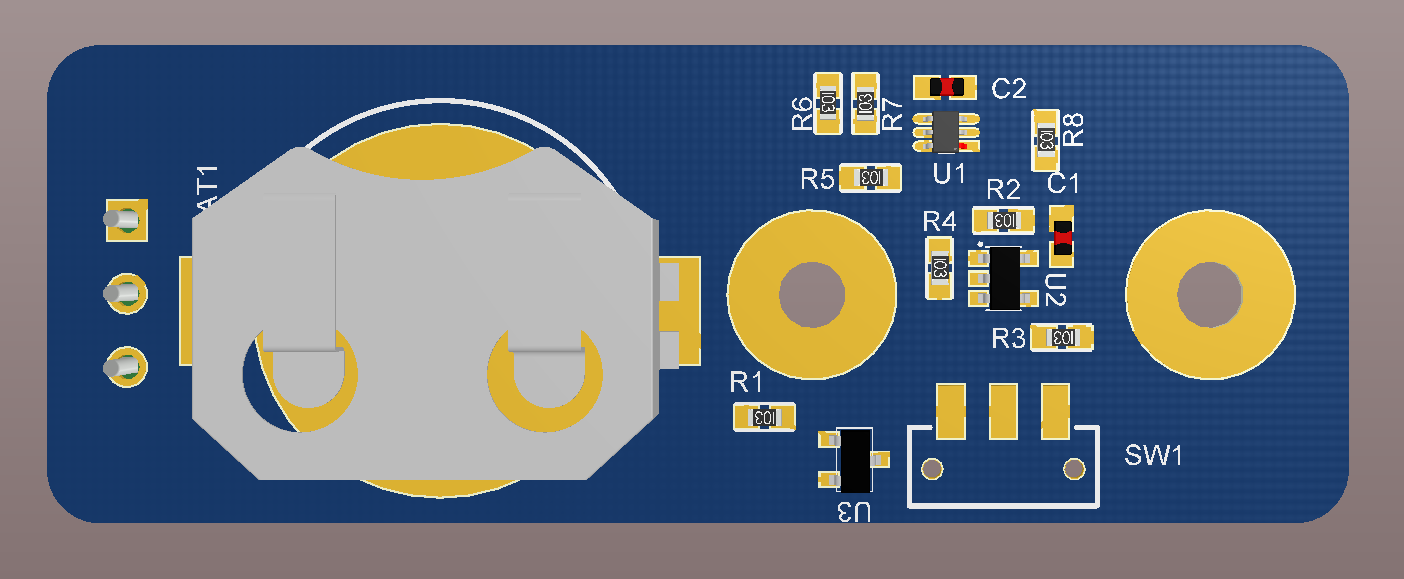


|
 |
|
|
#1 |
|
Registered Member
Join Date: Apr 2013
Posts: 1,793
|
For the PAR inclined . Apogee upgraded sensor
For those that own one..
http://www.apogeeinstruments.com/mq-...upgrade-offer/ for those that don't but may want to get one in the future: Data sheet: http://www.apogeeinstruments.com/con...spec-sheet.pdf significant corrections in the blue and red response.. 
|
|
|

|
|
|
#2 |
|
100-mile-commuter
Join Date: Dec 2004
Location: almost nevada
Posts: 4,721
|
Good find.
For those with just the sensors (why buy another special purpose multimeter), it looks like the new output is 0.01mv (100x mult), where the old one had a much higher output at 0.2mV (5x mult). Thats an order of magnitude less signal level, so if you're multimeter has a terrible low end range you may have issues.
__________________
Custom electronics purveyor. blueAcro.com Current Tank Info: 90g SPS+mixed reef (10 yrs): LEDBrick LEDs, 40g custom sump, Ca reactor, chiller, Vortech, lots of custom electronics |
|
|

|
|
|
#3 | ||
|
Registered Member
Join Date: Apr 2013
Posts: 1,793
|
Hey, just the person to ask..
When I was researching for a DIY PAR sensor one thing always came up. Photodiodes do not really have a good linear response in the voltage domain.. Especially when unbiased, as most seem to be.. http://in.ncu.edu.tw/ncume_ee/datash...nalsemicon.pdf Best to use the current output. Much more linear. Of course I believe the amplification was an issue.. Thoughts??? forgive my ignorance on this or trying to simplify a complicated problem.. My original thought was to use a very fine amp meter..  http://www.electroschematics.com/653...meter-circuit/ Yea it all sort of boils down to the same thing.. sorry just a curiosity point of mine.. In other words: Quote:
http://www.analog.com/media/en/techn...gn-MS-2624.pdf This is kind of funny.. http://amasci.com/emotor/nanoamp.html C Quote:
Last edited by oreo57; 02/28/2016 at 02:46 AM. |
||
|
|

|
|
|
#4 |
|
Registered Member
Join Date: Apr 2013
Posts: 1,793
|
bump for the Apogee part..

|
|
|

|
|
|
#5 |
|
100-mile-commuter
Join Date: Dec 2004
Location: almost nevada
Posts: 4,721
|
I ordered one, will have to experiment with the response.
Photodiodes are more accurate in current mode, and I imagine the "amplified" models (not yet in the SQ-500 line) would have an integrated transimpedance amplifier. As it stands, most (cheaper) multimeters have a 100uV resolution (and a few counts of accuracy), this puts the SQ-500 readings at about +/- 20-50 PAR due to the very low signal levels (which is a lot for a reef tank). Unless your meter has a high resolution or 10uV mode, it will need an amp. I'm working up a low cost one of those you can just strap on top of the multimeter, and read direct millivolts to PAR (which easily gets you 1PAR of resolution). If there is interest, I'm sure I'll have a few spares to send off. Apogee charges an extra $200 for their rebadged multimeter 
__________________
Custom electronics purveyor. blueAcro.com Current Tank Info: 90g SPS+mixed reef (10 yrs): LEDBrick LEDs, 40g custom sump, Ca reactor, chiller, Vortech, lots of custom electronics |
|
|

|
|
|
#6 |
|
100-mile-commuter
Join Date: Dec 2004
Location: almost nevada
Posts: 4,721
|
Example formfactor:
 The right hand has a screw down terminal block for the sensor. The two big holes have banana jacks pointing downards. Slip it into any cheap multi-meter and go. The battery and op-amps are on the back side.
__________________
Custom electronics purveyor. blueAcro.com Current Tank Info: 90g SPS+mixed reef (10 yrs): LEDBrick LEDs, 40g custom sump, Ca reactor, chiller, Vortech, lots of custom electronics |
|
|

|
|
|
#7 |
|
Registered Member
Join Date: Jan 2005
Location: Zuehl, Texas
Posts: 4,460
|
This is awesome, thanks
|
|
|

|
|
|
#8 |
|
Premium Member
 Join Date: Sep 2005
Posts: 3,626
|
They want $300 just for the sensor?
|
|
|

|
|
|
#9 |
|
Registered Member
Join Date: Apr 2013
Posts: 1,793
|
|
|
|

|
|
|
#10 |
|
100-mile-commuter
Join Date: Dec 2004
Location: almost nevada
Posts: 4,721
|
Noodled up something this evening:
Basic overview: MAX9617 op-amp with 100x gain. This is a chopper op-amp with low input offset voltage, at maximum specification (10uV) this is +1PAR on the output signal. Typical is rated around 1uV, so 0.1PAR. LMV321 op-amp to make a virtual ground. CR2032 battery. Cheap and plentiful. Lots of runtime for the amplifier. Terminal block for the sensor. Two banana plugs (not modeled) for the multimeter connection on standard 0.75" headers. On/off switch (not modeled)   
__________________
Custom electronics purveyor. blueAcro.com Current Tank Info: 90g SPS+mixed reef (10 yrs): LEDBrick LEDs, 40g custom sump, Ca reactor, chiller, Vortech, lots of custom electronics |
|
|

|
|
|
#11 | |
|
Registered Member
Join Date: Sep 2009
Posts: 1,079
|
Quote:
|
|
|
|

|
|
|
#12 |
|
Registered Member
Join Date: Oct 2013
Location: 33612
Posts: 2,461
|
Why not make your life simpler and get their USB version? No need for meters or calculations. Just plug it to your laptop or Windows tables and wait for the software to show you where you are.
http://www.bulkreefsupply.com/usb-sm...szOBoCHgfw_wcB
__________________
32 gallon Biocube, DIY LEDs and Triton Method. My N=1 study of me, validated by me, and supported by completely anecdotal evidence, states that my advice is 100% correct, most of the time. |
|
|

|
|
|
#13 | |
|
100-mile-commuter
Join Date: Dec 2004
Location: almost nevada
Posts: 4,721
|
Quote:
It's not the new SQ-500 sensor which corrects for blue (and red) LEDs.
__________________
Custom electronics purveyor. blueAcro.com Current Tank Info: 90g SPS+mixed reef (10 yrs): LEDBrick LEDs, 40g custom sump, Ca reactor, chiller, Vortech, lots of custom electronics |
|
|
|

|
|
|
#14 |
|
100-mile-commuter
Join Date: Dec 2004
Location: almost nevada
Posts: 4,721
|
Of course nothing precludes strapping a Bluetooth frontend to this if a phone interface is more appealing. When working in a wet environment where I may drop things at any time, I tend to prefer a ruggedized multimeter type system.
__________________
Custom electronics purveyor. blueAcro.com Current Tank Info: 90g SPS+mixed reef (10 yrs): LEDBrick LEDs, 40g custom sump, Ca reactor, chiller, Vortech, lots of custom electronics |
|
|

|
|
|
#15 | |
|
Registered Member
Join Date: Apr 2013
Posts: 1,793
|
Quote:
small flashing LED on board that tells you when data was sent....      
|
|
|
|

|
|
|
#16 |
|
Registered Member
Join Date: May 2010
Location: Essex, MD
Posts: 979
|
So i'm looking at this chart... and it seems that it weighs 375-450 more (uv range) and puts less emphasis up around 650nm?
am I reading that right?. Super curious as to the data we may find with this sensor in regards to LED and halide and T5 dramamamamas
__________________
BRB, Goldfish on fire How much deeper would the ocean really be if sponges didn't exist? Current Tank Info: 75 gallon mixed reef tank |
|
|

|
|
|
#17 |
|
Registered Member
Join Date: Apr 2013
Posts: 1,793
|
|
|
|

|
|
|
#18 |
|
Registered Member
Join Date: May 2010
Location: Essex, MD
Posts: 979
|
I'd like a tachometer personally
__________________
BRB, Goldfish on fire How much deeper would the ocean really be if sponges didn't exist? Current Tank Info: 75 gallon mixed reef tank |
|
|

|
|
|
#19 |
|
Registered Member
Join Date: Sep 2009
Posts: 1,079
|
Stop calling 400-430nm UV. It is not UV. It is just violet. Manufacturers need to stop it with that nonsense. There is no UV to be found on pretty much every mass produced aquarium LED light out there.
|
|
|

|
|
|
#20 |
|
Registered Member
Join Date: May 2010
Location: Essex, MD
Posts: 979
|
isn't 375-400 uv? Seems everything I can find online specifies those wavelengths as UVA
__________________
BRB, Goldfish on fire How much deeper would the ocean really be if sponges didn't exist? Current Tank Info: 75 gallon mixed reef tank |
|
|

|
|
|
#21 |
|
Registered Member
Join Date: Sep 2009
Posts: 1,079
|
Yes 390nm and below is UVA but it's kinda irrelevant since there are no LED fixtures out there that use these diodes. MH PAR will go up though as it has decent output in 390nm range.
At the end of the day though people who use 420nm actinic T5 bulbs will see their PAR number go way up since the old sensor was off by a boat load in this range. |
|
|

|
|
|
#22 |
|
Diver & Reef Aquarium Nut
Join Date: May 2012
Location: Sierra Vista, AZ
Posts: 1,127
|
This is a very good article to use as a reference in these types of discussions:
http://www.advancedaquarist.com/2014/5/aafeature |
|
|

|
|
|
#23 |
|
Registered Member
Join Date: May 2010
Location: Essex, MD
Posts: 979
|
considering royal blues are the bulk of almost all fixtures there's a big step in that 450 range too.
__________________
BRB, Goldfish on fire How much deeper would the ocean really be if sponges didn't exist? Current Tank Info: 75 gallon mixed reef tank |
|
|

|
|
|
#24 | ||||
|
Registered Member
Join Date: Apr 2013
Posts: 1,793
|
Quote:
funny how the new sensor will measure "blue" more accurately yet cut off more "UV"(sub 400nm).. Arguably 405 or 410nm "violets" have a UV component.. Quote:
Quote:
 for reference:  Technically any light a Li-Cor measures on a sub 400nm LED is NOT uv either..  just measures what dribbles into the "purple" range, w/ some wash..  well I guess it is a matter of definition... In which case you are absolutely right.. Quote:

Last edited by oreo57; 03/01/2016 at 03:51 PM. |
||||
|
|

|
|
|
#25 |
|
Registered Member
Join Date: May 2010
Location: Essex, MD
Posts: 979
|
my reefll pucks have 400's in them too that show output in the 385 or so range as well
__________________
BRB, Goldfish on fire How much deeper would the ocean really be if sponges didn't exist? Current Tank Info: 75 gallon mixed reef tank |
|
|

|
 |
| Thread Tools | |
|
|